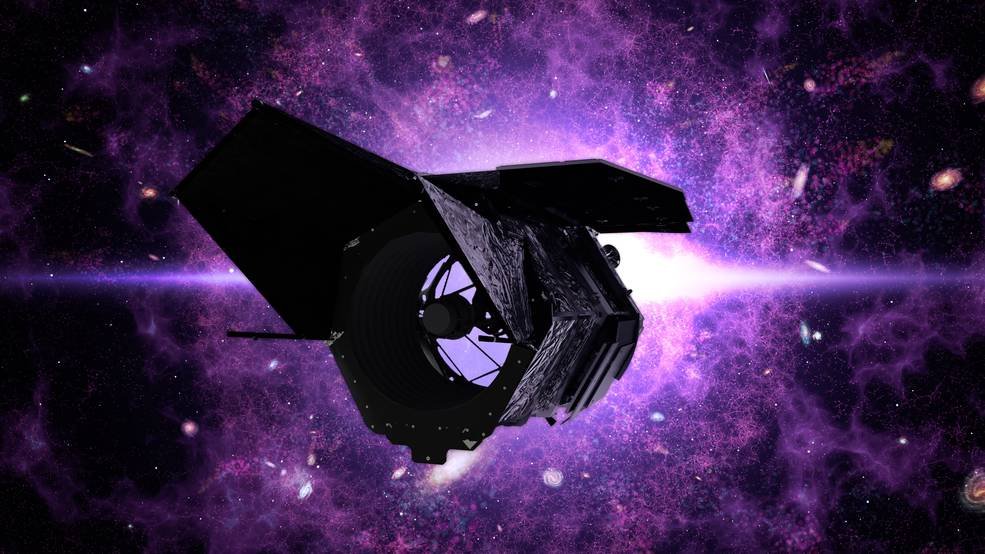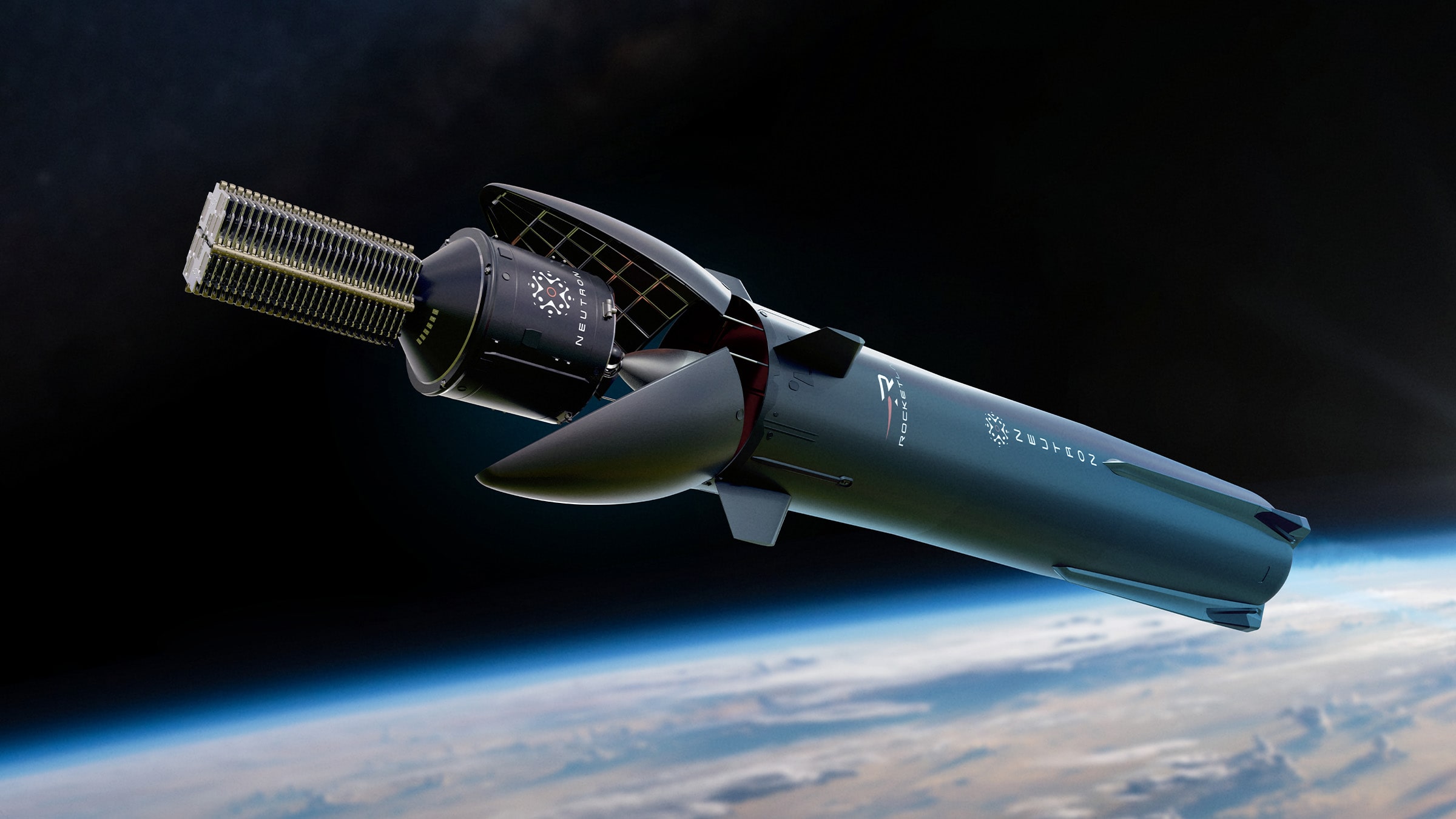Story at a glance…
-
NASA is seeing flagship missions stall from lack of funding at the same time the US Space Force is receiving large funding increases.
-
The increases reflect a new era of American rhetoric on outer space as a “warfighting domain” where America must be “dominant”.
-
The consequences of the militarization of outer space are beginning to affect the space economy, foreign policy decisions, and government investment in outer space technology.
If flagship NASA missions like the Nancy Grace Roman Space Telescope and the Mars Sample Return mission are being cancelled at the same time that defense spending amounts to the majority of last year’s increase in global government space investment, that’s a clear signal how the elected officials in Washington view the Final Frontier.
At a recent civil-defense space industry conference, the rhetoric was strong: the future of space innovation is warfighting, not peaceful commercial use.
The Senate recently confirmed Troy Meink as Secretary of the Air Force and Space Force. He called for expanded Space Force budgets during his confirmation hearing in March, and is expected to expand its mission set six years after Donald Trump created it during his former administration.
WaL has reported on the growth in the nature and budget of the Space Force, both here and for other publications, and the branch has an intense focus on a dozen organizational tasks other than warfighting. When it comes to warfighting, though, and no matter who in the Space Force is being interviewed, they discuss one thing—an attack on US satellites.
But recognition that space has become a “warfighting domain” (the term that’s always used) is on the lips of anybody involved in the Space Force or defense-oriented space economy. Within two years, the Space Force had eclipsed the US agency for the peaceful use of space, i.e. NASA, despite the latter existing with almost universal American appreciation for more than 60 years.
Only nuclear-armed nations have access to space in a warfighting sense, and only nuclear-armed nations worry and plan about how to fight a war in space. Fighting a war in space, any US military personnel at the Air and Space forces are happy to explain, involves the disruption of satellites. Meink testified to this fact during his hearing.
“Space is critical,” Meink said before the Senate Armed Services Committee. “This is actually one of the areas that we’re most challenged, I believe, from the rapidly evolving threat from China and others, both the direct threat to our systems as well as the threat those systems pose to our operations across the department in general”.
In 2023, WaL reported on Sandra Erwin’s work at Space News covering the growth in the Space Force, and its dictate that, contrary to the spirit of the 1967 Outer Space Treaty (OST), space is now a “warfighting domain”. Recently though, Erwin documents a substantial shift in rhetoric, away from statements like space is an environment that’s “congested and contested” to a “warfighting domain”. Warfighting precludes any other activities, in the same way that beachgoers are not allowed to visit military islands.
General Chance Saltzman, Space Force’s Chief of Space Operations, said as much—on March 3rd at the Air & Space Forces Association’s Warfare Conference in Aurora, Colorado: “why would you have a military space service if not to execute space control?”

A paradigm shift
The OST opens thusly. “The States Parties to this Treaty… recognizing the common interest of all mankind in the progress of the exploration and use of outer space for peaceful purposes… [and] desiring to contribute to broad international co-operation in the scientific as well as the legal aspects of the exploration and use of outer space for peaceful purposes… have agreed on the following”.
“The moon and other celestial bodies shall be used by all States Parties to the Treaty exclusively for peaceful purposes. The establishment of military bases, installations and fortifications, the testing of any type of weapons and the conduct of military manœuvres on celestial bodies shall be forbidden. The use of military personnel for scientific research or for any other peaceful purposes shall not be prohibited. The use of any equipment or facility necessary for peaceful exploration of the moon and other celestial bodies shall also not be prohibited”.
While it’s generally accepted that the OST did not prevent—entirely—the positioning of conventional weapons in space, international law experts should be able to see in this passage the spirit of the treaty, signed as it was by nations “inspired by the great prospects opening up before mankind as a result of man’s entry into outer space”.
In contrast, we have this from the keynote speech General Saltzman gave at the annual Space Symposium in Washington DC this year.
“Space superiority is now a prerequisite for battlefield success,” he said. “So regardless of whether or not you believe space superiority will win the next war, it must be recognized that we will most certainly lose without it”.
Gen. Stephen Whiting, the new head of US Space Command said in his speech that although war in space wasn’t inevitable, “there is no longer any debate that space is a warfighting domain”.
“We’re moving past ‘protect and defend’ and, yeah, we’re going to talk about offensive capabilities in space,” Lt. Gen. Shawn Bratton, the Space Force’s deputy chief of space operations for strategy, plans, programs and requirements, told reporters at the symposium.
Major leadership in the US Space Force are leading this paradigm shift in rhetoric and organizational posture, in part as a response to alleged threats to US satellite infrastructure from China and Russia, but also because if activity in any domain is given to a soldier, they will naturally view it through the lens of war.
A compelling case study is Erwin’s report on how the Space Force interpreted a certain orbital event some years ago. It’s been well-documented that space debris has become a major problem in geosynchronous orbits, and both private and public voices have raised concerns and ideas on how to deal with it.
In 2021, the Chinese spacecraft Shijian-21 entered orbit around the earth and made a rendezvous with a dead satellite. Using a robotic arm, it grabbed the debris and towed it into a ‘graveyard orbit’ above the geostationary belt. As it happens, and as Erwin reports, key space-based Pentagon assets like missile detection systems orbit in this higher band. Shijian left the defunct Baidou-2 GPS satellite and drifted back to geosynchronous orbit.
“You could look at China working to develop the capability to remove inactive satellites on orbit as a way in which it is being a responsible space actor and cleaning up debris that it caused. Or you could use the lens that a lot of the US-based China watchers use and say that this could indicate that China is developing an on-orbit offensive capability,” Victoria Samson, the Washington Office director for the Secure World Foundation, said at the time.
Of course, thanks to earlier chapters in the militarization of space, US space personnel, neither military nor civilian, are allowed to ever engage or connect with Chinese entities of any kind. As a result of that, “US-based China watchers” were consulted to explain Shijian-21’s actions rather than a flourishing Chinese-US space-based forum such as NASA enjoys with Russia, and since space is a “warfighting domain,” the working hypothesis is that Shijian-21 was designed to tow US satellites out of their orbits, and was testing that capability.

The cost to humankind
Erwin’s coverage of the symposium’s complete dominance by Pentagon personnel and defense contractors includes more than what can be written here, but the private sector, she writes, took note of the new interest in offensive capabilities. Technologies and assets such as autonomous docking and refueling systems, robotic arms to grab satellites out of orbit, more precise and maneuverable in-space propulsion systems, and sensors capable of peering inside satellites, are all private-sector innovations that, rather than being contracted for the peaceful use of space, are being eyed by the Space Force as dual-use technologies that will allow them to effectively arm-up the United States military’s satellite infrastructure.
Rocket Lab, one of America’s most successful space companies, has developed a cutting-edge rocket for space-accessible cargo deliveries called the Neutron that has been selected for an experimental US Air Force mission that might one day deliver material to any point on Earth within hours—akin to airlift logistics via spaceflight.
What would the Air Force need so urgently that it would be willing to front the cost of a rocket launch? The imagination doesn’t wander farther off than bombs and warplane parts.
The Novaspace Government Space Programs report for 2024 reports that military-oriented government space investments have accounted for the majority of the $135 billion in annual worldwide government space spending over the last 2 years.
In direct contrast, NASA has recently suffered a budget cut, even as the Senate and House debate whether they will add $100 billion to the Pentagon’s budget, or $150 billion. The cuts include the elimination of funding for the Nancy Grace Roman Space Telescope, which, if it were allowed to proceed, could very well become far more important to humanity’s use of space than the James Webb Space Telescope.
Mary Anne Limbach is an astronomer at the University of Michigan and an exoplanet scientist specializing in space-based infrared observations of planets, moons and rings beyond our solar system. She has led or co-led 10 James Webb Space Telescope programs. Her team has spent years preparing for Roman’s launch, and are now agonizing over the potential that this decade-in-the-making observatory will be grounded or worse.
“One of Roman’s primary missions is a microlensing survey that will detect about 2,500 exoplanets, ranging from rocky worlds like Earth to massive gas giants like Jupiter,” she wrote in an op-ed at Space News. “In addition to those 2,500 microlensing detections, the same survey is expected to inadvertently detect thousands of transiting exoplanets”.
“But Roman is also uniquely capable of detecting something we’ve never conclusively observed before: exomoons. Roman can continuously observe bright, glowing, young giant planets to search for the transits of orbiting moons. If our current models of moon formation are correct, these surveys could detect around a dozen moons — potentially including ones comparable in size to Saturn’s moon Titan”.
Limbach explains this is all capable with just one of Roman’s instruments. It is an example of what is on hold and/or what will never be as a result of the ballooning budgets and beliefs for space as a warfighting domain. WaL
We Humbly Ask For Your Support—Follow the link here to see all the ways, monetary and non-monetary.
PICTURED ABOVE: Troy Meink, President Donald Trump’s nominee for Secretary of the Air Force and Space Force before the Senate Armed Services Committee on March 27th, 2025. PC: SASC livestream.



